Fear of flying! Stamp collectors and technological changes..
Moderador: Rein
- Rein
- Usuario Colaborador

- Mensajes: 6258
- Registrado: 13 Mar 2009 15:59
- Ubicación: Leiden, Netherlands
- Contactar:
Fear of flying! Stamp collectors and technological changes..
In the begining everything was simple!
We had just a few printing techniques like lithography, typography and recess...
Instead of using a pair of scissors to cut off our stamps, we got more decent methods like line-perforation and for typography comb-perforation!
We had thin or thick paper. Or even very thin and very thick paper!
As to colours we could amuse ourselves endlessly with Prussian blue, Magenta and several other colours derived from the battle fields of Napoleon...
This should stay!
Even in the 21st century we prefer to use terms that have nothing to do with the actual technology. Plate flaws when there are hardly any plates used anymore...
The philatelic language is for pleasant conversations among young-seniors! Nobody else should interfere...
to be continued ...
We had just a few printing techniques like lithography, typography and recess...
Instead of using a pair of scissors to cut off our stamps, we got more decent methods like line-perforation and for typography comb-perforation!
We had thin or thick paper. Or even very thin and very thick paper!
As to colours we could amuse ourselves endlessly with Prussian blue, Magenta and several other colours derived from the battle fields of Napoleon...
This should stay!
Even in the 21st century we prefer to use terms that have nothing to do with the actual technology. Plate flaws when there are hardly any plates used anymore...
The philatelic language is for pleasant conversations among young-seniors! Nobody else should interfere...
to be continued ...
- Rein
- Usuario Colaborador

- Mensajes: 6258
- Registrado: 13 Mar 2009 15:59
- Ubicación: Leiden, Netherlands
- Contactar:
Re: Fear of flying! Stamp collectors and technological chang
New printing techniques of stamp production appeared in 1907 and somewhat later. All based upon photomechanical reproduction to prepare the printing stock.
The State Printers in Budapest did usem the Phototype method for stamps of Bulgaria in 1907. Later on, the Russian State Printers in Moscow - Goznak - used this method for quite some time till the 1960-ies...
Still, it took the Michel catalogue editors some 50 years before they realized that these Russian stamps had not been printed in photogravure or offset-litho!
We find photogravure since 1914 - starting in Munich, Bayern - and offset-litho since 1915 in Buenos Aires, Argentina. Or did we have an earlier stamp printed in offset-litho in the USA?
to be continued ...
The State Printers in Budapest did usem the Phototype method for stamps of Bulgaria in 1907. Later on, the Russian State Printers in Moscow - Goznak - used this method for quite some time till the 1960-ies...
Still, it took the Michel catalogue editors some 50 years before they realized that these Russian stamps had not been printed in photogravure or offset-litho!
We find photogravure since 1914 - starting in Munich, Bayern - and offset-litho since 1915 in Buenos Aires, Argentina. Or did we have an earlier stamp printed in offset-litho in the USA?
to be continued ...
- Rein
- Usuario Colaborador

- Mensajes: 6258
- Registrado: 13 Mar 2009 15:59
- Ubicación: Leiden, Netherlands
- Contactar:
Re: Fear of flying! Stamp collectors and technological chang
Printings so far flat-bed only. No reel-fed printing with "endless" reels!
This changed around 1910 as German and French manufacturers introduced their new presses - just for typography, but still! Chambon in France and Goebel A.G. in Darmstadt,Germany.
In the US we had Stickney for recess printing. Quite spectacular as the problems with somewhat moist paper should have given some problems! The moistening was preventing the use of comb-perforation practically everywhere.
Stickney presses were used in Belgium, Czechoslowakia, Sweden and the USA. Usually line-perforation was used.
Since 1930 we see recess-printed stamps predominantly with comb-perforations. This started in France and other countries followed..
to be continued ...
This changed around 1910 as German and French manufacturers introduced their new presses - just for typography, but still! Chambon in France and Goebel A.G. in Darmstadt,Germany.
In the US we had Stickney for recess printing. Quite spectacular as the problems with somewhat moist paper should have given some problems! The moistening was preventing the use of comb-perforation practically everywhere.
Stickney presses were used in Belgium, Czechoslowakia, Sweden and the USA. Usually line-perforation was used.
Since 1930 we see recess-printed stamps predominantly with comb-perforations. This started in France and other countries followed..
to be continued ...
- Rein
- Usuario Colaborador

- Mensajes: 6258
- Registrado: 13 Mar 2009 15:59
- Ubicación: Leiden, Netherlands
- Contactar:
Re: Fear of flying! Stamp collectors and technological chang
Photogravure needed a delicate system of pits and edges to keep the ink from dropping off the cylinder and not getting swiped off by the doctor's blade... In short, it need a screen. And unfortunately this screen had a bad influence on the outlook of the stamp as well. So the printers would rather not use a screen.
In 1923 we had several types of screen, the mosaic scree, the traditonal cross-lined screen, and even the screen-less!
Screenless or unscreened photogravure could onyl exist with special features of the design in the sense of askew lines and circle/ovals.
We find the mosaic screen in stamps of Egypt [1923] and South Africa [1949] , unscreened in Switzerland [1927-1928], South-Africa [1929-1948] and Vatican City [1929]. Most of it the work of the Leiden firm - Nederlandsche Rotogravure Maatschappij in cooperation with the Goebel A.G., Darmstadt. The NRM was responsible for printing the Swiss and the Egypt stamps!
Mosaic screen:
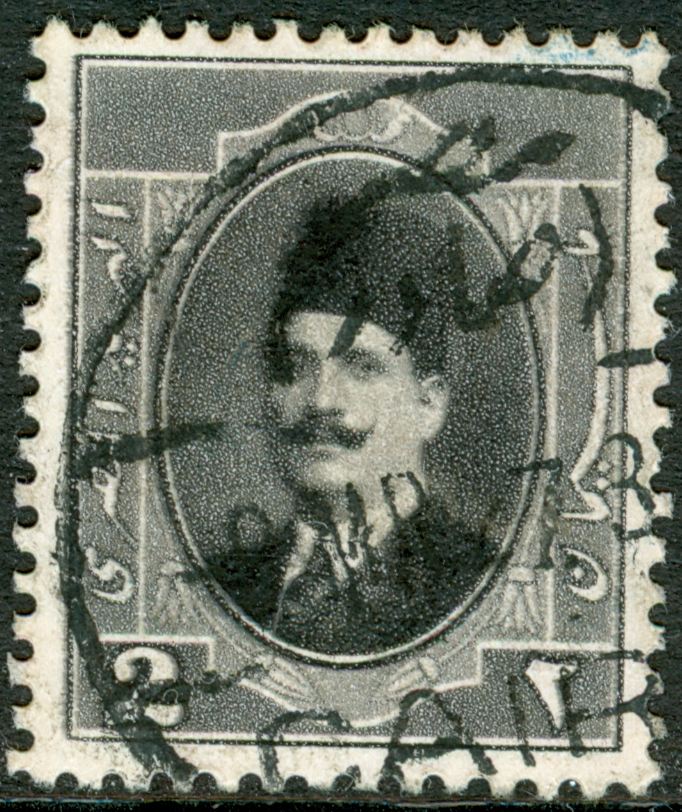

Cross-lined screen:

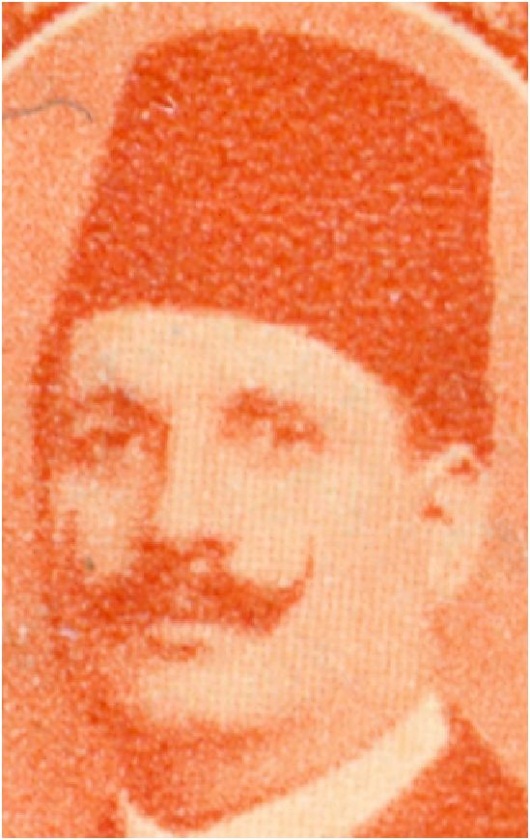
Screenless:
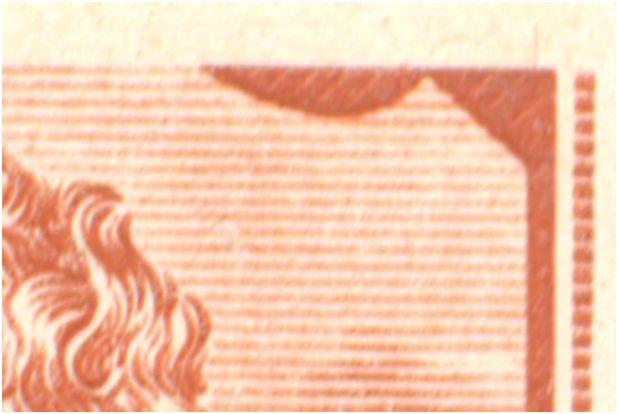
to be continued ...
In 1923 we had several types of screen, the mosaic scree, the traditonal cross-lined screen, and even the screen-less!
Screenless or unscreened photogravure could onyl exist with special features of the design in the sense of askew lines and circle/ovals.
We find the mosaic screen in stamps of Egypt [1923] and South Africa [1949] , unscreened in Switzerland [1927-1928], South-Africa [1929-1948] and Vatican City [1929]. Most of it the work of the Leiden firm - Nederlandsche Rotogravure Maatschappij in cooperation with the Goebel A.G., Darmstadt. The NRM was responsible for printing the Swiss and the Egypt stamps!
Mosaic screen:


Cross-lined screen:


Screenless:

to be continued ...
- Rein
- Usuario Colaborador

- Mensajes: 6258
- Registrado: 13 Mar 2009 15:59
- Ubicación: Leiden, Netherlands
- Contactar:
Re: Fear of flying! Stamp collectors and technological chang
These developments remained unnoticed by most collectors. Only in South Africa some research got done!
There are hardly any publications on photogravure and very rare in the philatelic world.
In 1981 Joachim Hoffmann published his "Die Rakeltiefdruckmarken der Niederlande" in the magazines of the German Arge Niederlande! Almost 50 A4-pages! In 1982 his article got translated into Dutch and published in the Dutch monthly "Philatelie". Eleven installments and the author received the 'Leon de Raay Medal" for the best scientific publication of the year!
The readers reacted furiously! Never again such an article! Are we supposed to read that? Who is capable of doing so? And what is the use of this all?
They then hadn't realized that the very translator of that article started his monthly publications in February 1983 for the "Philatelie" magazine about the technical aspects of new Dutch issues.
And he is doing this still after almost 30 years!
Fear of technological knowledge of how stamps got produced! And ... what this implies for collecting the very stamps and their variation... Collectors apparently do not like to be forced into reading articles and closely watching their stamps.. They do not want to be called philatelists.
In 1986 José Merlo published his "El Huecograbado y sus variedades" or the 'photogravure method and its variations'. Almost 150 pages.
How many collectors have bought this publication???
to be continued ...
There are hardly any publications on photogravure and very rare in the philatelic world.
In 1981 Joachim Hoffmann published his "Die Rakeltiefdruckmarken der Niederlande" in the magazines of the German Arge Niederlande! Almost 50 A4-pages! In 1982 his article got translated into Dutch and published in the Dutch monthly "Philatelie". Eleven installments and the author received the 'Leon de Raay Medal" for the best scientific publication of the year!
The readers reacted furiously! Never again such an article! Are we supposed to read that? Who is capable of doing so? And what is the use of this all?
They then hadn't realized that the very translator of that article started his monthly publications in February 1983 for the "Philatelie" magazine about the technical aspects of new Dutch issues.
And he is doing this still after almost 30 years!
Fear of technological knowledge of how stamps got produced! And ... what this implies for collecting the very stamps and their variation... Collectors apparently do not like to be forced into reading articles and closely watching their stamps.. They do not want to be called philatelists.
In 1986 José Merlo published his "El Huecograbado y sus variedades" or the 'photogravure method and its variations'. Almost 150 pages.
How many collectors have bought this publication???
to be continued ...
- Rein
- Usuario Colaborador

- Mensajes: 6258
- Registrado: 13 Mar 2009 15:59
- Ubicación: Leiden, Netherlands
- Contactar:
Re: Fear of flying! Stamp collectors and technological chang
Recess not only had problems with the moistening of paper but also in achieving multicolour stamps. More and more beautiful stamps were demanded and that required the use of more colours. It would be most simple to use a separate printing plate or cylinder for each colour.
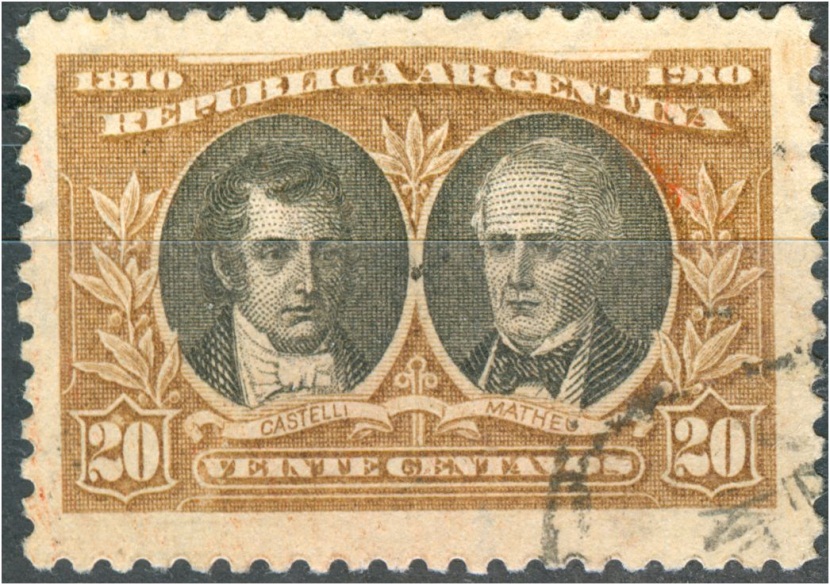
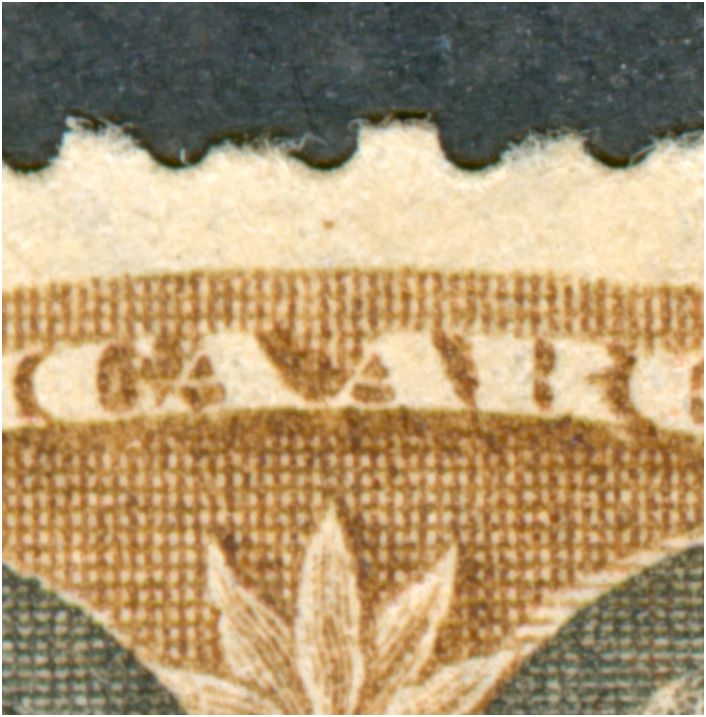
This problem had been long solved in printing nice banknotes!
Just one plate with several inking devices so simultaneously - up to 3 colours - the ink could be applied. The so-called Giori-method.
The first such postage stamp was produced in 1926 in the State Printing House in Mexico. Poland followed in 1938, and after 1939 the French stamp producers made this method their standard for practically all stamps...
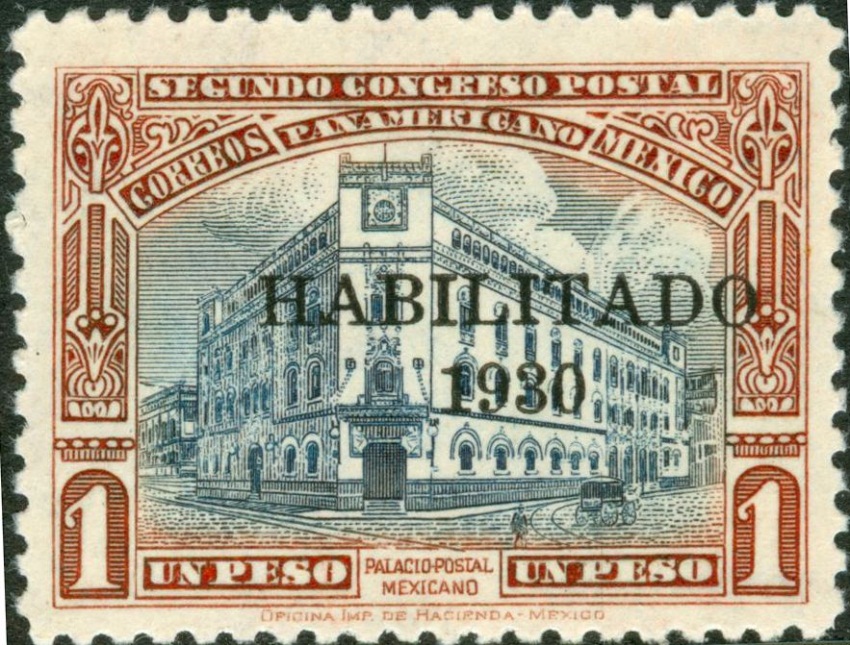
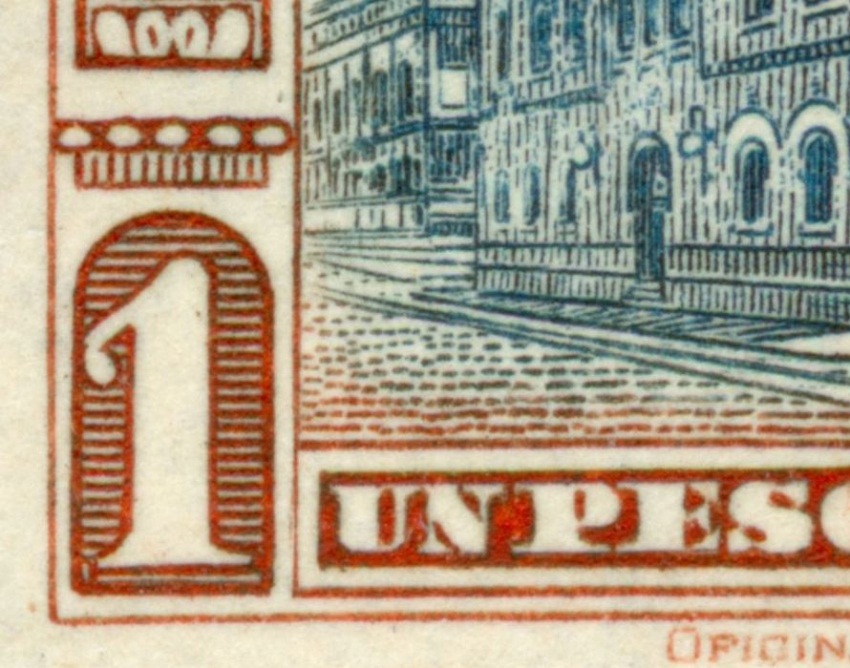
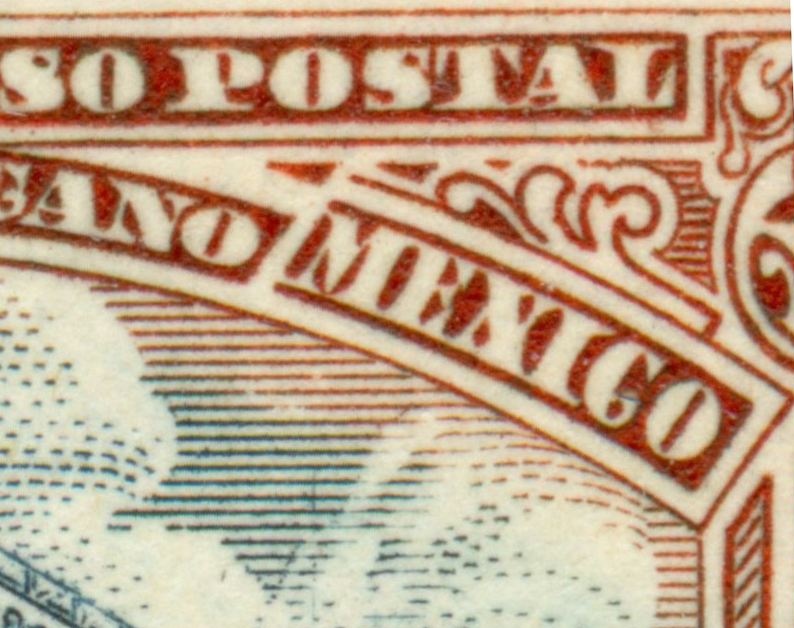
to be continued ....


This problem had been long solved in printing nice banknotes!
Just one plate with several inking devices so simultaneously - up to 3 colours - the ink could be applied. The so-called Giori-method.
The first such postage stamp was produced in 1926 in the State Printing House in Mexico. Poland followed in 1938, and after 1939 the French stamp producers made this method their standard for practically all stamps...



to be continued ....
- Rein
- Usuario Colaborador

- Mensajes: 6258
- Registrado: 13 Mar 2009 15:59
- Ubicación: Leiden, Netherlands
- Contactar:
Re: Fear of flying! Stamp collectors and technological chang
Some examples of the Giori-method!
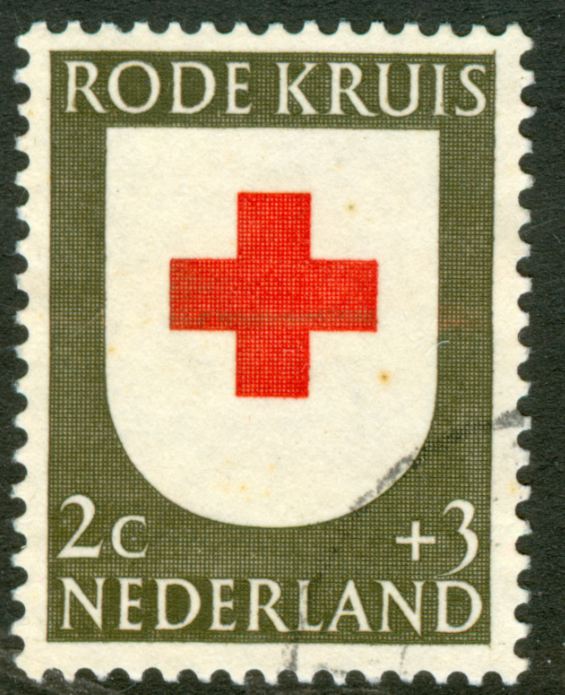
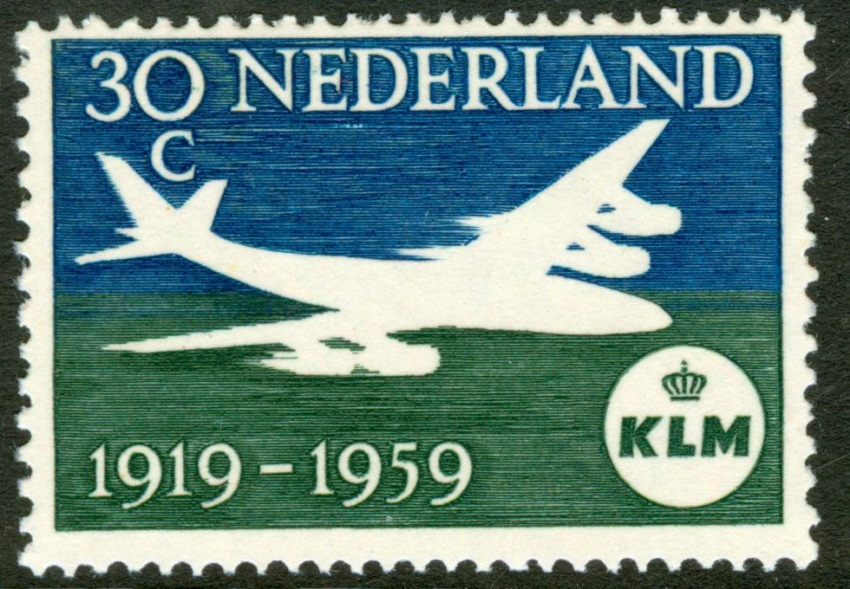

Have a good look at the blue line. You will find stamps that will not have this! It all depends on the registration of the inking devices...
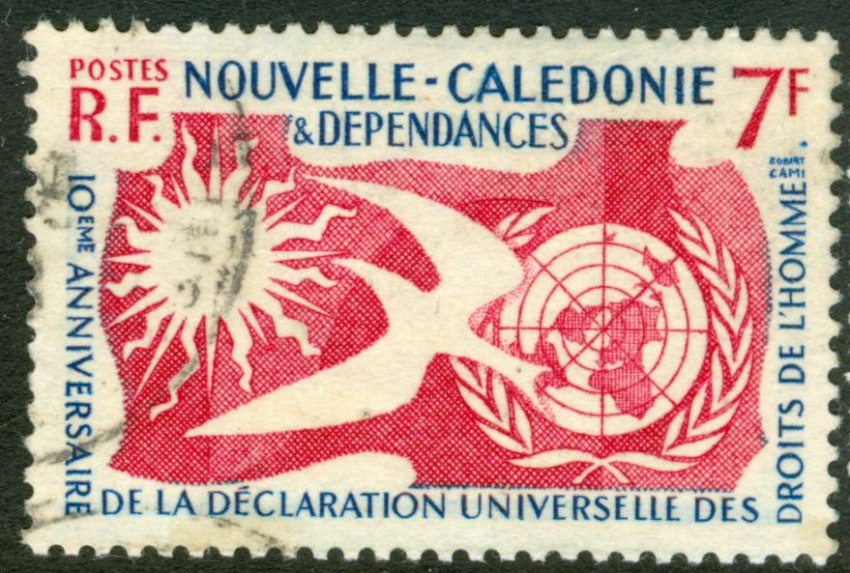
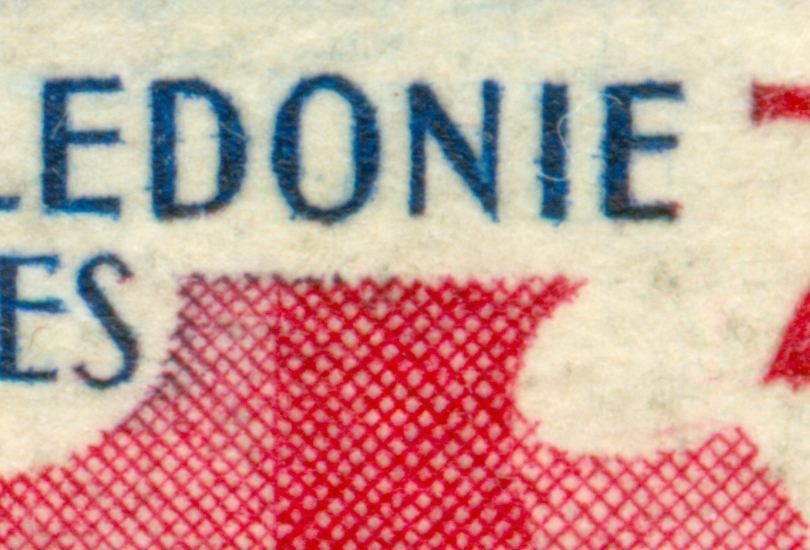
The S and the second E have become reddish a bit what was not intended!
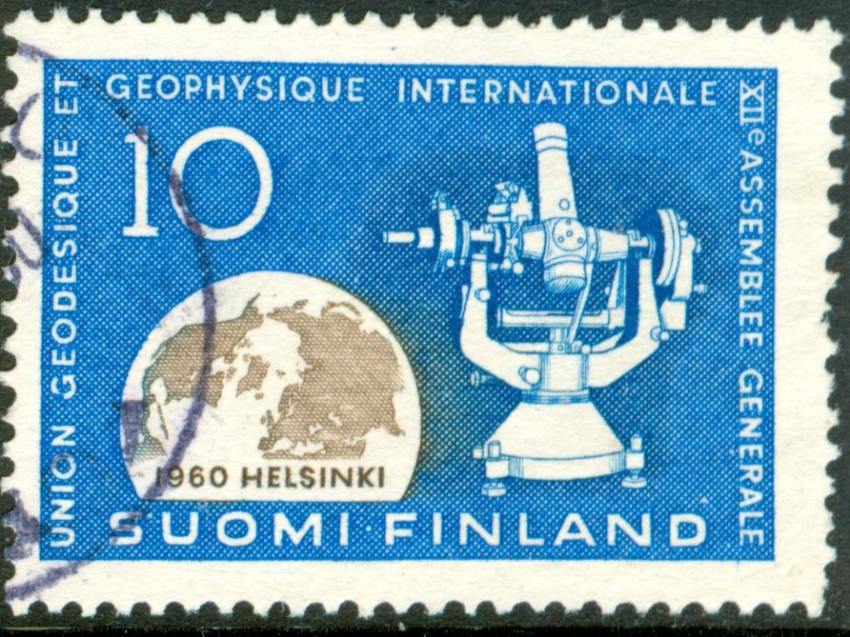
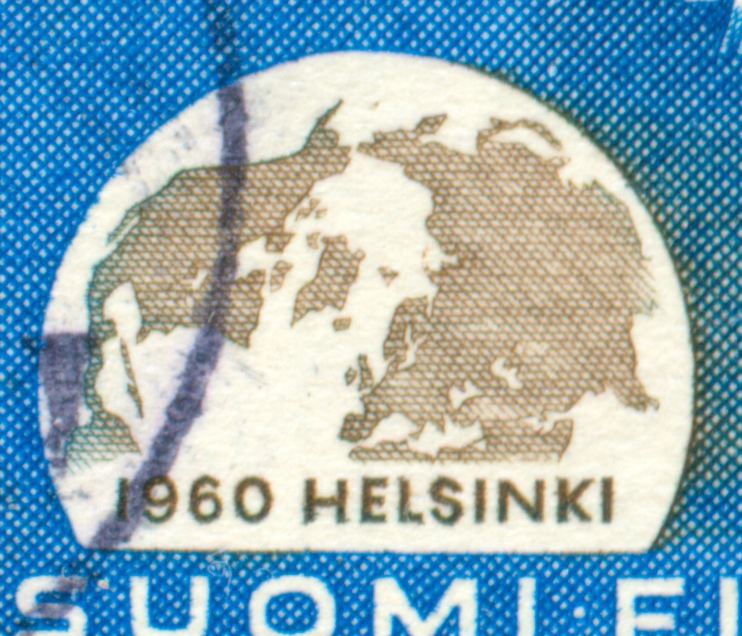
To be continued ....



Have a good look at the blue line. You will find stamps that will not have this! It all depends on the registration of the inking devices...


The S and the second E have become reddish a bit what was not intended!


To be continued ....
- Rein
- Usuario Colaborador

- Mensajes: 6258
- Registrado: 13 Mar 2009 15:59
- Ubicación: Leiden, Netherlands
- Contactar:
Re: Fear of flying! Stamp collectors and technological chang
And last but not least the necessary inking rolls for this Giori-method!
As seen in Bern, Switzerland the PTT-Stamp Printers when I paid them a visit!
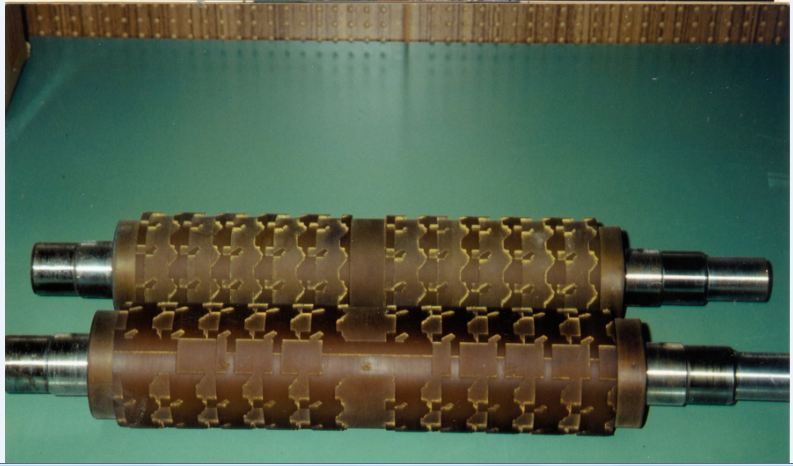

To be continued ...
As seen in Bern, Switzerland the PTT-Stamp Printers when I paid them a visit!


To be continued ...
- Rein
- Usuario Colaborador

- Mensajes: 6258
- Registrado: 13 Mar 2009 15:59
- Ubicación: Leiden, Netherlands
- Contactar:
Re: Fear of flying! Stamp collectors and technological chang
The greatest innovations for stamp manufacturing came from Germany.
Goebel A.G. Darmstadt introduced in 1928 in close cooperation with the Dutch "Nederlandsche Rotogravure Maatschappij" smaller and narrower printing presses for recess and photogravure.
In 1928 for the Italian State Printers in Rome, in 1929 for the State Printers in Pretoria - South-Africa, in 1936 for the TIEV in Mexico, in 1937 for Moestue, Oslo... All in photogravure at times also unscreened!
Recess presses for Denmark [1933] and Sweden [1938] at their Post Office Stamp Printers, in 1936 for Warszawa, Polen [PWPW] and Bern (combined recess and photogravure), etc.
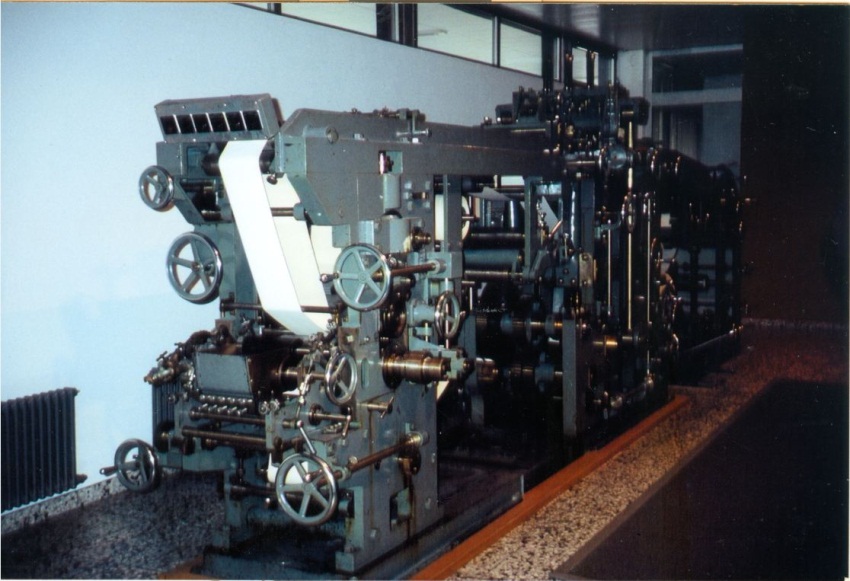
After the WWII similar reel-fed presses were produced in Switzerland by WInckler Fallert A.G. [WIFAG]. WIFAG's could be found already in 1945 in Bern, later in the 1950-ies also in Mechelen [Belgium], Warszawa, Prag and Moscow. Yes, even in Peking since 1959!
Often not just recess but a combination. In Warszawa combined recess, photogravure and typography.
The Swiss definitives are easily be distinguished with which press they had been printed. Just pay attention to the direction of paper.
For both types of presses it goes that the perforation units were build in and they had either comb-perforation or sheet-perforation. In the case of WIFAG the perforation gauge was always near 11 1/2 or 11 3/4.
To be continued ....
Goebel A.G. Darmstadt introduced in 1928 in close cooperation with the Dutch "Nederlandsche Rotogravure Maatschappij" smaller and narrower printing presses for recess and photogravure.
In 1928 for the Italian State Printers in Rome, in 1929 for the State Printers in Pretoria - South-Africa, in 1936 for the TIEV in Mexico, in 1937 for Moestue, Oslo... All in photogravure at times also unscreened!
Recess presses for Denmark [1933] and Sweden [1938] at their Post Office Stamp Printers, in 1936 for Warszawa, Polen [PWPW] and Bern (combined recess and photogravure), etc.

After the WWII similar reel-fed presses were produced in Switzerland by WInckler Fallert A.G. [WIFAG]. WIFAG's could be found already in 1945 in Bern, later in the 1950-ies also in Mechelen [Belgium], Warszawa, Prag and Moscow. Yes, even in Peking since 1959!
Often not just recess but a combination. In Warszawa combined recess, photogravure and typography.
The Swiss definitives are easily be distinguished with which press they had been printed. Just pay attention to the direction of paper.
For both types of presses it goes that the perforation units were build in and they had either comb-perforation or sheet-perforation. In the case of WIFAG the perforation gauge was always near 11 1/2 or 11 3/4.
To be continued ....